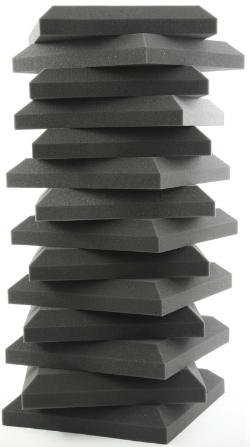Between home studio recording and live performances like podcasts, there are two types of microphones to choose from. Namely dynamic and condenser microphones, probably the two biggest types you can choose from.
So what’s the difference?
Well, the main difference between the two is the way they convert sound waves into sound signal outputs determined by unique internal transduction devices.
In a dynamic microphone, electromagnetic induction is used to convert acoustic energy into electrical energy. By using a diaphragm, coil, and magnet transducer combo. Condenser microphones, on the other hand, uses two plates a fixed back plate a flexible front plate.
Read more here: https://www.adorama.com/alc/dynamic-vs-condenser-microphone
Archives for April 2018
Acoustic Treatment Buying Guide – inSync

Room acoustics make up probably the biggest challenge we have in home recording. Not only can they completely change the sound of what is coming out of your monitors, making mixing and mastering really difficult (you’re left making decisions based on inaccurate sound), but the room can ad echo-y, reverb-y noise to your recordings on the front end. The best way to deal with this is to put acoustic treatment on your walls. But there are a lot of options out there. Sweetwater has a guide to help.
Key Takeaways:
- One important way to transform a room that was not initially intended for music, is to use acoustical foam.
- Acoustical foam can get rid of the noise anomalies, like slap and flutter-echo, which are endemic in an environment not created for recording.
- Flutter-echo is a noise one hears, because two parallel surfaces are reflecting sound off of them.
“Every sound in your studio will hit a surface and either be absorbed or reflected back. The lack of acoustic treatment can really color your recordings, and usually in a bad way.”
You can hear what an amazing difference acoustic treatment made in my home studio in my post here: Improve The Quality Of The Audio You Record At Home – Tip 6: Acoustic Treatment
Here is the Sweetwater guide:
Read more: https://www.sweetwater.com/insync/acoustic-treatment-buying-guide/
Scrubbing and Jogging audio in REAPER 5
Apple is a great tool to use Reaper 5 on. You can download different audio files on the website and definitely get some scores of music done. You have to be able to find a way to make sure that people can share files legally on Reaper 5. The ease at which people can share music is what makes these different tools so popular. You can find a number of websites where music will be enhanced by the great work that makes the music industry flow.
Key Takeaways:
- Audio-speaking, scrubbing refers to going over the playhead bit by bit to find a specific point by ear.
- Jogging in audio-speak refers to moving the cursed with alacrity to a specific point in the timeline.
- REAPER users will find that when the transport is stopped that the are in scrub mode and when it is playback that jog mode is on.
“It’s so easy to set up REAPER to use mousewheel or a MIDI controller knob for Scrubbing and Jogging!”
This Online Library Of Free 808 Drum Machine Patterns Will Blow Your Mind
So you own an 808, and you’ve been wanting to program your original TR- 808 by Roland. Classic drum patterns maybe? Look no further 808.pixll.de, can hook you up with those drum machines and instrument plugins and it’s free, yes free. This is a free resource of classic and modern 808 drum patterns.
It’s not just a library for Roland TR-808, TR-08 or TR-8/TR-8S enthusiasts but is a community as well. Publish, share and interact with your fellow enthusiasts to add to your creative imagination. And listen to others works as well. This site is truly an intuitive, graphically rich interactive experience.
Read more here: https://ask.audio/articles/this-online-library-of-free-808-drum-machine-patterns-will-blow-your-mind
Groove3 Home Studio Know-How: The Room & Acoustics Review
Being able to properly setup a studio professionally is crucial for anybody who is looking to enter the music industry, or hopes to record their own music to then be distributed. The new Groove3 Home Studio course provides those who need it with the knowledge and information on how to establish a proper studio, including how to best setup the room when putting everything in place and how to get the acoustic audio required for high quality music.
Key Takeaways:
- Groove3 has consistently worked on improving their in-home studio products.
- Their latest edition of Home Studio provides music producers with everything they need.
- Specifically, it helps in ensuring that the acoustics in the room are up to par for music making.
“This course by Dave Askew and Groove3 tackles its subject in a manageable way, with over 90 minutes spread across 12 streamable videos.”
Read more: http://www.musictech.net/2018/02/groove3-home-studio-know-how-review/